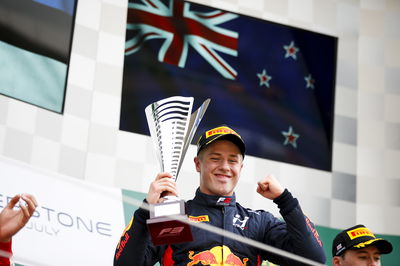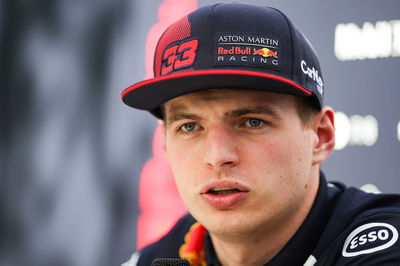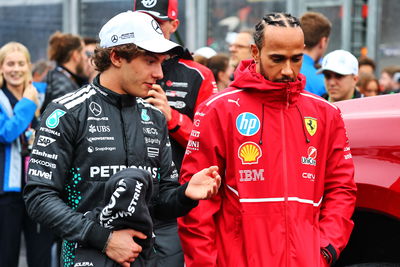The drivers facing a delay on reaching F1
A delayed start to the 2020 Formula 1 season due to the ongoing coronavirus crisis has caused widespread ramifications, including for those on the cusp of reaching the highest tier.
Not only has racing been put on hold - after the opening nine races were either postponed or cancelled - but so too have talks over driver’s futures, with the 2021 F1 driver market landscape changing dramatically in the past weeks.
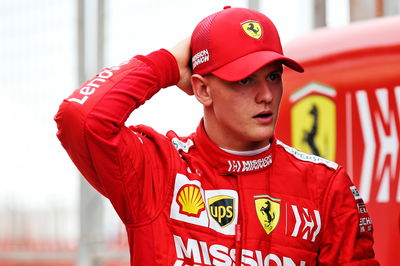
A delayed start to the 2020 Formula 1 season due to the ongoing coronavirus crisis has caused widespread ramifications, including for those on the cusp of reaching the highest tier.
Not only has racing been put on hold - after the opening nine races were either postponed or cancelled - but so too have talks over driver’s futures, with the 2021 F1 driver market landscape changing dramatically in the past weeks.
While the likes of Charles Leclerc and Max Verstappen have already sorted their short-term futures by committing to Ferrari and Red Bull, there are a number of big-name deals still to be settled such as six-time world champion Lewis Hamilton, Sebastian Vettel and Daniel Ricciardo.
The situation in F1 naturally has a domino effect on the supporting rungs of the ladder including Formula 2, where young drivers are vying to impress and take advantage of any potential openings that might come their way above.
Mick Schumacher, the son of legendary Ferrari driver and seven-time world champion Michael, is one the most high-profile F2 drivers aiming to reach F1, possibly as early as 2021.
Schumacher finished 12th overall during a relatively low-key rookie Formula 2 season with Prema in 2019 in which he claimed his maiden victory in the series in the reversed-grid race at the Hungaroring.
Naturally, following a transitional year in F2 with one of the leading teams, big things were expected for the 21-year-old member of the Ferrari Driver Academy for the upcoming 2020 campaign. Ferrari team boss Mattia Binotto said he believes that Schumacher would be a “good candidate” for an F1 seat in the future after completing two official test days with the Italian squad and Alfa Romeo in Bahrain last year.
But Schumacher, like all of his rivals, needs to be racing in order to prove himself. Should Schumacher indeed go on to mount a title charge when the season eventually gets underway, there would be clear pathway options in F1.
Instant graduation to Ferrari would be a stretch given how the Scuderia handled Leclerc’s sensational rise to wearing scarlet red via its close ties with the Sauber (now Alfa Romeo) team, a move to either Alfa Romeo or Haas would be more likely for 2021 to assess Schumacher’s credentials in F1 before the dream scenario of emulating his father could happen.
It is understood that Ferrari’s association with Alfa Romeo means it holds a large sway over one of the two seats at the Swiss side, which currently fields ex-Ferrari driver Kimi Raikkonen alongside its current junior Antonio Giovinazzi.
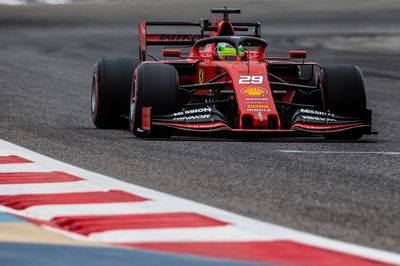
In a world unaffected by the COVID-19 pandemic, Alfa Romeo would be the most likely landing spot for Schumacher, but the nature of such a promotion hinges on factors including whether the out-of-contract, soon to be 41-year-old Raikkonen decides to continue racing and Giovinazzi’s performance after the Italian came under pressure in 2019.
It is not out of the question that Alfa Romeo will need to find at least new one driver for 2021 and, assuming Schumacher does enough to impress this year, he would emerge as a prime candidate. The German finds himself facing some tough opposition, however, in the shape of fellow FDA recruits Callum Ilott, Giuliano Alesi, Robert Shwartzman and Marcus Armstrong, all of whom find themselves in similar situations regarding their futures amid the coronavirus-related hiatus.
There is arguably more pressure on Ilott and Alesi, who are both about to embark on their sophomore F2 seasons. Meanwhile, reigning FIA Formula 3 champion Shwartzman and Armstrong are set for their F2 bows this year after graduating from FIA F3 and would have not - barring an incredible rookie campaign - been looking towards F1 at the end of 2020, but more realistically setting their sights on 2022.
Former FDA member Guanyu Zhou, who now finds himself as Renault’s test and reserve driver, is the French manufacturer’s leading junior heading into his second season in F2. The 20-year-old impressed as the highest-placed rookie in 2019, scoring five podiums on his way to seventh spot in the championship.
Renault has ambitions of promoting a driver from its roster of academy talent to F1 by 2021, despite recently signing Esteban Ocon to partner big-money signing Daniel Ricciardo for 2020. The biggest question mark at Renault is whether Ricciardo will agree to an extension to continue with the Enstone outfit following a frustrating 2019 season.
The Australian’s decision has been further complicated by F1’s decision to postpone the planned technical regulation overhaul by a year until 2022, with Renault pilling much of its focus onto the major rules change in its bid to return to winning ways - a vision that tempted Ricciardo to quit Red Bull in the first place.
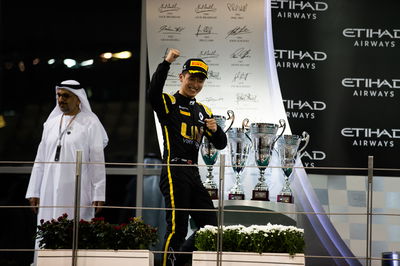
Renault chief Cyril Abiteboul has made it clear that in any scenario in which Ricciardo should leave the team, it would preferably replace him with one of its emerging talents. A strong campaign would surely leave Zhou at the head of the queue in his quest to become the first Chinese F1 driver.
Another driver seemingly well-placed for F1 promotion in the near future is Red Bull junior Juri Vips. After impressing en route to a fourth-place finish in the 2019 Formula 3 championship, the Estonian has switched to Japan to contest this year’s Super Formula series with the Honda-powered Mugen outfit.
Vips has been tipped as a potential star of the coming years and is one of Red Bull’s leading chargers within its junior pool. He is halfway towards the 40 point target after accruing 20 over the past two years in FIA F3 and European F3 and could well hit the figure with a competitive Super Formula campaign.
One of the biggest frustration marks and unknowns for all young drivers is the situation surrounding superlicence points. Drivers have a three-year period to accumulate the 40 superlicence points required to race in F1 and it has not yet been confirmed how the system will be affected in the event of limited, or no racing this year.
All of these factors and scenarios will have a subsequent ripple effect on the drivers below the second tier of the ladder in FIA F3 and regional championships and could impact the careers of many promising up-and-coming youngsters.
The coronavirus crisis will likely continue to dictate the picture for now but when the time comes that racing can resume, the drivers will finally be able to give their answers on the track.
